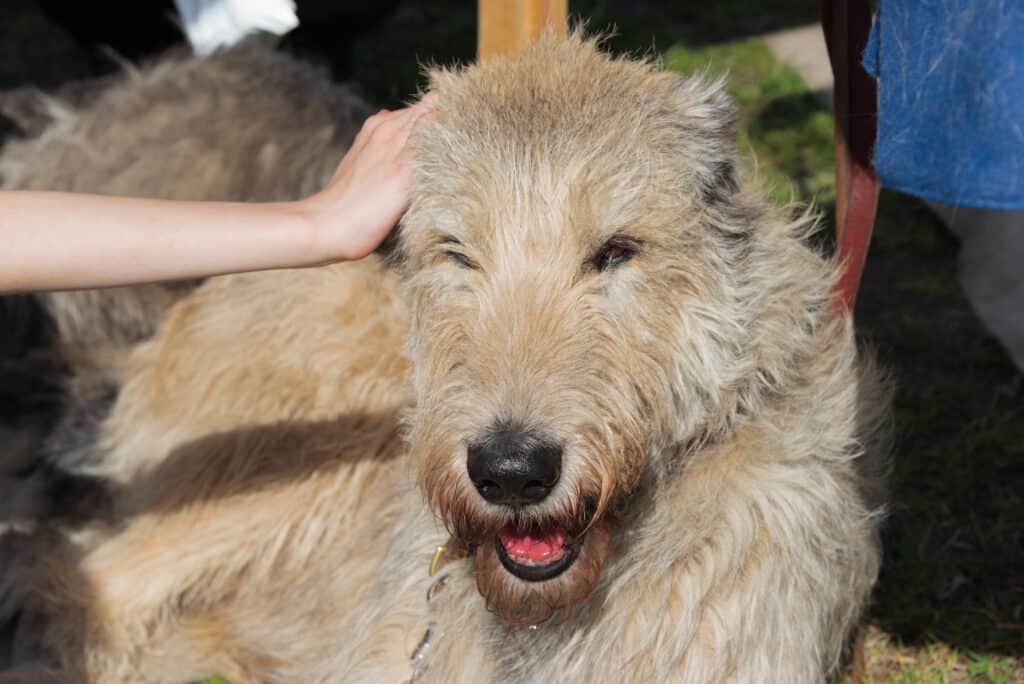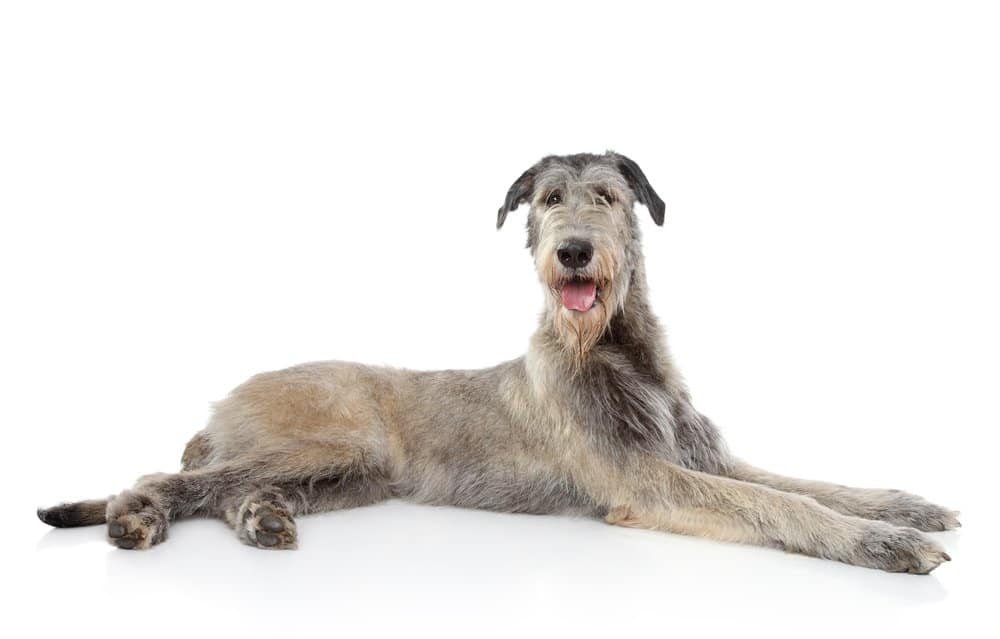Male vs Female Irish Wolfhound: 4 Key Differences
The Irish Wolfhound is truly a gentle giant. This enormous breed may look intimidating, but don’t count on using them as a guard dog. They’re too gentle and dignified in nature for that, and certainly not aggressive. Nonetheless, their size alone may be enough to scare off an intruder! The Irish Wolfhound dates back to 15th century Ireland, where they had the job of hunting wolves. Today, they are simply calm-natured canine companions. If you’re thinking of owning one of these majestic creatures, it’s useful to know about male vs. female Irish Wolfhounds’ key differences.
Comparing a Male and Female Irish Wolfhound
| Gender | Weight | Height | Maturation | Training |
| Female | 105 to 140 lbs. | 30 inches | First heat anytime between nine and 16 months of age | Learns faster than males |
| Male | 120 to 180 lbs. | 32 inches | Sexually mature as early as six months of age | Learns fast |
Key Differences Between Male and Female Irish Wolfhounds

©iStock.com/Shumoff
1. Male vs. Female Irish Wolfhound: Size
These canines are graceful while still being large and muscular. Females and males vary in their full size. According to breed standards, male Irish Wolfhounds are on average 32 inches high and may reach as much as three feet at the shoulder. Females are slightly smaller overall at around 30 inches. A male could weigh anywhere from 120 to 180 pounds, while a female is usually around 105 to 140 lbs. Both males and females don’t fully fill out until they are well over one year old.
2. Male vs. Female Irish Wolfhound: Maturation
Historically, neutering and spaying around six months of age was considered standard practice. Today, most breeders and veterinarians agree that it should be delayed until around 18 to 24 months. Early spay and neutering can affect growth plate closures, leading to hip dysplasia. This is particularly something that can affect large breeds, with the Irish Wolfhound of course being the largest breed there is. Irish Wolfhounds don’t fully mature until at least 18 months of age and up to two years of age. However, males can be sexually mature as early as six months of age. Females typically go into their first heat anytime between nine and 16 months of age.
3. Male vs. Female Irish Wolfhound: Training

©Jagodka/Shutterstock.com
Irish Wolfhounds respond well to training, especially since they’re very in tune with their human companions. Females may be easier to train as they are thought to be a bit more intelligent, but this of course depends on the individual dog and should be taken with a grain of salt. Irish Wolfhounds need to be leash trained, because as sighthounds, their prey drive may cause them to take off and run. Despite their predisposition towards running, both males and females are generally low-key, and don’t need a huge amount of exercise. They can be quite lazy if given the chance to be.
4. Male vs. Female Irish Wolfhound: Health
Both males and females may suffer from the same conditions common in giant breed dogs. Due to their large size, their lifespan is unfortunately relatively short, between six to 10 years. Female Irish Wolfhounds are said to live longer than males but by only a small amount, such as around six months or so. Some conditions both sexes may be prone to include bloat, which is known to affect large breeds, and needs to be treated immediately. Cardiomyopathy is a heart condition that causes arrhythmia, possibly leading to congestive heart failure. Osteochondritis dissecans is a condition where the cartilage separates from the bone. Since Irish Wolfhounds grow a huge amount, growth that’s too quick, poor nutrition, or the incorrect amount of exercise when still growing can lead to this problem.









